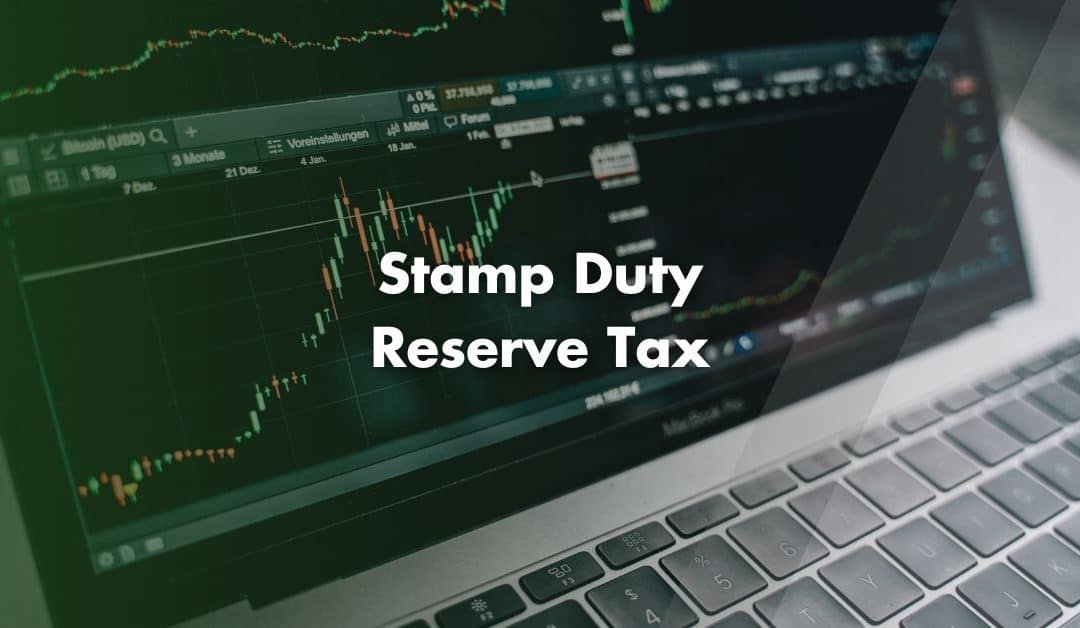When it comes to taxes, most people are familiar with Stamp Duty Land Tax (SDLT) on property purchases. However, the lesser known Stamp Duty Reserve Tax (SDRT) applies to buying shares and securities electronically.
What is Stamp Duty Reserve Tax?
Stamp Duty Reserve Tax applies when you purchase shares and securities electronically. Unlike traditional Stamp Duty, which requires a physical document like a stock transfer form, SDRT automatically applies to electronic trades.
The current rate is 0.5% of the purchase price. HMRC collects the tax and your financial intermediary, such as a stockbroker, handles it automatically when you trade online; in most cases.
When Do You Need to Pay Stamp Duty Reserve Tax?
You need to pay Stamp Duty Reserve Tax when you buy shares electronically, including trades through online platforms or brokers using CREST, the UK’s electronic settlement system. In most cases, the broker automatically collects the 0.5% charge and pays it to HMRC.
For off-market trades (those not done through CREST), you may be responsible for paying SDRT yourself. The deadline depends on the nature of the trade:
- If you could have settled the transaction through CREST but did not, you must pay SDRT and notify HMRC within 14 days of the transaction
- If you absolutely could not settle the transaction through CREST, you must notify HMRC and pay the tax by the 7th day of the month following the month of the transaction
In both cases, you must provide transaction details including the buyer and seller names, the number and class of shares, and the consideration (purchase price).
How to Pay SDRT on Off-Market Trades
If you are making an off-market transaction:
- Send a written notice to HMRC with full transaction details
- Make a bank transfer to HMRC using their official payment account
- Include a clear reference number to help HMRC process your payment correctly
The deadline for payment depends on the type of trade:
- Within 14 days of the transaction date if you could have settled the trade via CREST
- By the 7th day of the following month if you could not have settled the trade via CREST
Missing the deadline may result in interest charges or penalties.
SDRT and CREST
CREST is the UK’s central electronic system for settling share trades. When you complete a trade through CREST, the system automatically deducts Stamp Duty Reserve Tax pays it to HMRC.
If you are using CREST, you usually do not need to take extra action. But for off-market transactions, manual steps are necessary. Also, if your trade qualifies for an exemption or relief, your broker should apply the right Transaction Stamp Status flag. Then, confirm with your broker that they have completed this step.
Exemptions and Reliefs
Not every share purchase is subject to Stamp Duty Reserve Tax. Common exemptions include:
- Receiving shares as a gift
- Inheriting shares in a will
- Transfers between spouses or civil partners
- Transfers during divorce or legal separation
- Shares listed on a recognised growth market but not traded on a major exchange
There are also reliefs. For instance, if you transfer shares to a registered charity or between companies within the same corporate group, the transaction can qualify, so long as it meets certain conditions.
If your trade uses CREST and qualifies for a relief or exemption, you must apply a special Transaction Stamp Status flag to ensure the system processes it automatically. This step ensures the system does not charge you when the transaction qualifies for an exemption.
Contact Us
We are not just accountants; we are Chartered Accountants with one of the most reputable and premium accounting bodies. We are registered and regulated by ACCA; so you can rest assured that you are in good hands. Knowing this, don’t hesitate to get in touch with us if you require assistance: Pi Accountancy | Contact Us
This article is for general informational purposes only and does not constitute legal or financial advice. While we aim to keep our content up to date and accurate, UK tax laws and regulations are subject to change. Please speak to an accountant or tax professional for advice tailored to your individual circumstances. Pi Accountancy accepts no responsibility for any issues arising from reliance on the information provided.

